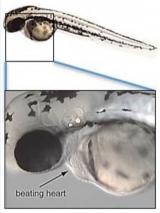Pathfinder Innovation Projects: Awardees for 2013
See below to learn more about the third year of Pathfinder Innovation Projects.
The third year of Pathfinder Innovation Projects represents a shift toward the original vision of the PIP program: kick-starting a variety of projects on different time and funding scales, an approach that matches the gated opportunities provided by other innovative organizations.
Exploring the Matthew Effect
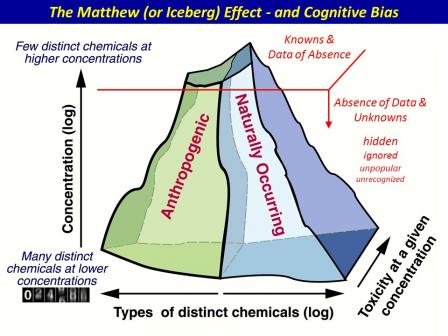 The Matthew Effect describes hidden, ignored, or unpopular concepts in scientific research.Known unknowns present some of the greatest opportunities. So Christian Daughton, EPA research physical scientist, explored a possible cognitive bias in the scientific world. The Matthew Effect, also known by other names such as the Iceberg Effect, essentially describes a process of following well-known concepts and not asking enough questions. Daughton examined whether the selection of pharmaceutical residues for monitoring in the environment is based on if those residues were previously monitored versus those for which data had not yet been collected. This PIP highlights the need for more attention to the absence of data (not be confused with data of absence) to ensure future exposure assessments are more holistic.
The Matthew Effect describes hidden, ignored, or unpopular concepts in scientific research.Known unknowns present some of the greatest opportunities. So Christian Daughton, EPA research physical scientist, explored a possible cognitive bias in the scientific world. The Matthew Effect, also known by other names such as the Iceberg Effect, essentially describes a process of following well-known concepts and not asking enough questions. Daughton examined whether the selection of pharmaceutical residues for monitoring in the environment is based on if those residues were previously monitored versus those for which data had not yet been collected. This PIP highlights the need for more attention to the absence of data (not be confused with data of absence) to ensure future exposure assessments are more holistic.
Improving Assessment of Air Pollution Sources
Air pollution – particulate matter especially – has been linked to various health problems, including heart health. But the many sources of particulate matter and regional differences in composition make establishing these connections time-intensive. EPA research biologist Aimen Farraj and research toxicologist Stephanie Padilla developed a rapid method to derive heart rate in zebrafish. If successful, the team will create a near-to-real-time measurement of heart rate responses in hundreds of fish at a time. This will enable faster comparative toxicity assessments of multiple air pollution sources and improved identification of sources and chemical components of the greatest concern.
Building a "brain on a chip"
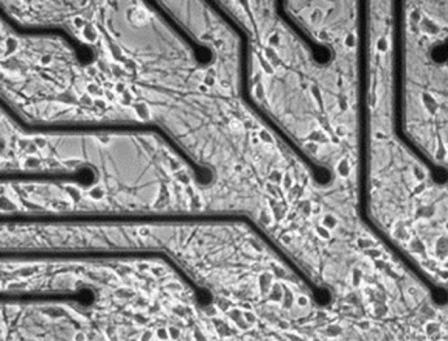 Neuron networks grown with microelectrodes could create a “brain on a chip” to test chemical toxicity. Testing chemicals for developmental neurotoxicity is expensive and time consuming. Only about 100 of the thousands of environmental chemicals have been tested for developmental neurotoxicity. EPA research toxicologists Timothy Shafer and William Mundy wanted to develop a faster, cheaper way to test chemicals. Their project assessed the activity in neuron networks grown on microelectrode arrays. Neuron changes could differentiate chemicals that affect brain development and those that don’t. If successful, the project will establish a rapid, economical approach – a “brain on a chip” – to screening large numbers of chemicals for developmental neurotoxicity.
Neuron networks grown with microelectrodes could create a “brain on a chip” to test chemical toxicity. Testing chemicals for developmental neurotoxicity is expensive and time consuming. Only about 100 of the thousands of environmental chemicals have been tested for developmental neurotoxicity. EPA research toxicologists Timothy Shafer and William Mundy wanted to develop a faster, cheaper way to test chemicals. Their project assessed the activity in neuron networks grown on microelectrode arrays. Neuron changes could differentiate chemicals that affect brain development and those that don’t. If successful, the project will establish a rapid, economical approach – a “brain on a chip” – to screening large numbers of chemicals for developmental neurotoxicity.
An innovative approach to water collection
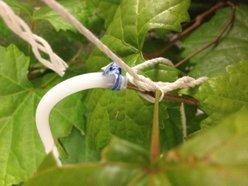 This interface between the hose and the grapevine helps researchers extract water.Access to clean water has become a defining issue in the past several decades. EPA research biologist Jay Garland aimed to demonstrate a proof-of-concept that would sustainably collect water via the common summer grapevine and nanotubes. This represents one of the first attempts ever to combine nanotechnology and plant xylem cells to harvest clean water. If successful, this project could open new opportunities for next-generation water infrastructures.
This interface between the hose and the grapevine helps researchers extract water.Access to clean water has become a defining issue in the past several decades. EPA research biologist Jay Garland aimed to demonstrate a proof-of-concept that would sustainably collect water via the common summer grapevine and nanotubes. This represents one of the first attempts ever to combine nanotechnology and plant xylem cells to harvest clean water. If successful, this project could open new opportunities for next-generation water infrastructures.
Building a new life cycle assessment framework
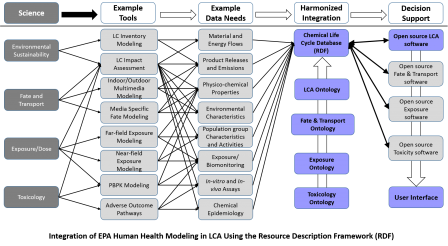 Life cycle analysis requires the integration of large amounts of information from many data sources.Life cycle assessments are notorious for the amount of data they require to become useful. David Meyer, EPA chemical engineer, combined chemical life cycle exposure data and human health risk assessment science into a framework for more comprehensive assessments of chemical sustainability. Traditional life cycle assessments only focus on generic interactions. Meanwhile, current risk assessment practices describe situation-specific scenarios, but focus on human and ecological health. Combining these two approaches will provide better information for decision making and sustainability. If successful, this project will accelerate chemical sustainability assessments by creating a common language that combines EPA’s various data sources.
Life cycle analysis requires the integration of large amounts of information from many data sources.Life cycle assessments are notorious for the amount of data they require to become useful. David Meyer, EPA chemical engineer, combined chemical life cycle exposure data and human health risk assessment science into a framework for more comprehensive assessments of chemical sustainability. Traditional life cycle assessments only focus on generic interactions. Meanwhile, current risk assessment practices describe situation-specific scenarios, but focus on human and ecological health. Combining these two approaches will provide better information for decision making and sustainability. If successful, this project will accelerate chemical sustainability assessments by creating a common language that combines EPA’s various data sources.
Incorporating sustainability into drinking water treatment methods
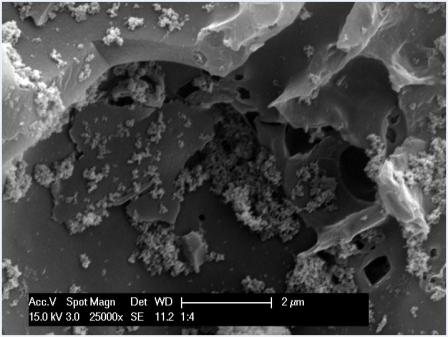 Activated carbon is shown here after being fused with nanoparticles.Sustainability starts with the resources we have, such as the sun. Craig Patterson, EPA environmental engineer, investigated the capabilities of carbon pellets infused with titanium dioxide nanoparticles. Sunlight (visible light) activates this combination of materials to remove organic contaminants from drinking water. That same light also regenerates the pellets for further use. This low-cost photocatalytic method has potential to reduce the environmental costs associated with current thermal methods for regeneration of activated carbon filters used to treat drinking water.
Activated carbon is shown here after being fused with nanoparticles.Sustainability starts with the resources we have, such as the sun. Craig Patterson, EPA environmental engineer, investigated the capabilities of carbon pellets infused with titanium dioxide nanoparticles. Sunlight (visible light) activates this combination of materials to remove organic contaminants from drinking water. That same light also regenerates the pellets for further use. This low-cost photocatalytic method has potential to reduce the environmental costs associated with current thermal methods for regeneration of activated carbon filters used to treat drinking water.

